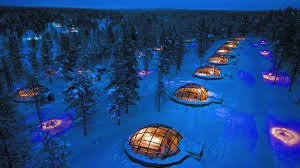Exploring the Enchantment of Lapland

Introduction to Lapland
Lapland, a region that straddles northern Norway, Sweden, Finland, and parts of Russia, is famed for its stunning natural beauty, unique wildlife, and rich cultural heritage. This Arctic destination is notable for its winter activities, indigenous Sámi culture, and the mesmerizing Northern Lights. With increasing interest from tourists around the globe, Lapland stands as a vibrant testament to the natural and cultural treasures of the Arctic.
Recent Developments and Attractions
In recent years, Lapland has seen a surge in tourism, particularly during the winter months when the region becomes a snowy wonderland. Numerous outdoor activities have gained popularity, including dog sledding, skiing, and snowshoeing. Additionally, visitors are drawn to Santa Claus Village in Rovaniemi, which offers a blend of festive spirit and cultural experiences. Local businesses are reported to have benefitted greatly from the increased tourist footfall, with many expanding their services to accommodate diverse visitors.
This winter season, Lapland is also welcoming new eco-friendly accommodations and sustainable tourism initiatives aimed at preserving the pristine environment while providing a unique experience. Hotels constructed from natural materials and highlighting energy efficiency are becoming increasingly common, appealing to eco-conscious travellers.
Impact of Climate Change
However, Lapland is not without its challenges. Studies indicate that climate change poses a significant threat to this delicate ecosystem. The region is experiencing rising temperatures, which has led to changes in animal migration patterns and a decrease in snowfall. Indigenous Sámi communities, who rely on reindeer herding as a crucial part of their culture and economy, are particularly affected. Experts warn that if current trends continue, the traditional lifestyles and natural habitats in Lapland may be at risk.
Conclusion and Final Thoughts
Lapland continues to enchant tourists and researchers alike with its stunning landscapes, unique culture, and seasonal phenomena. As sustainable tourism becomes more crucial, it remains important for both visitors and local businesses to engage in practices that protect this remarkable environment. The future of Lapland depends not only on its ability to attract tourists but also on its commitment to preserving its natural and cultural heritage for generations to come.









